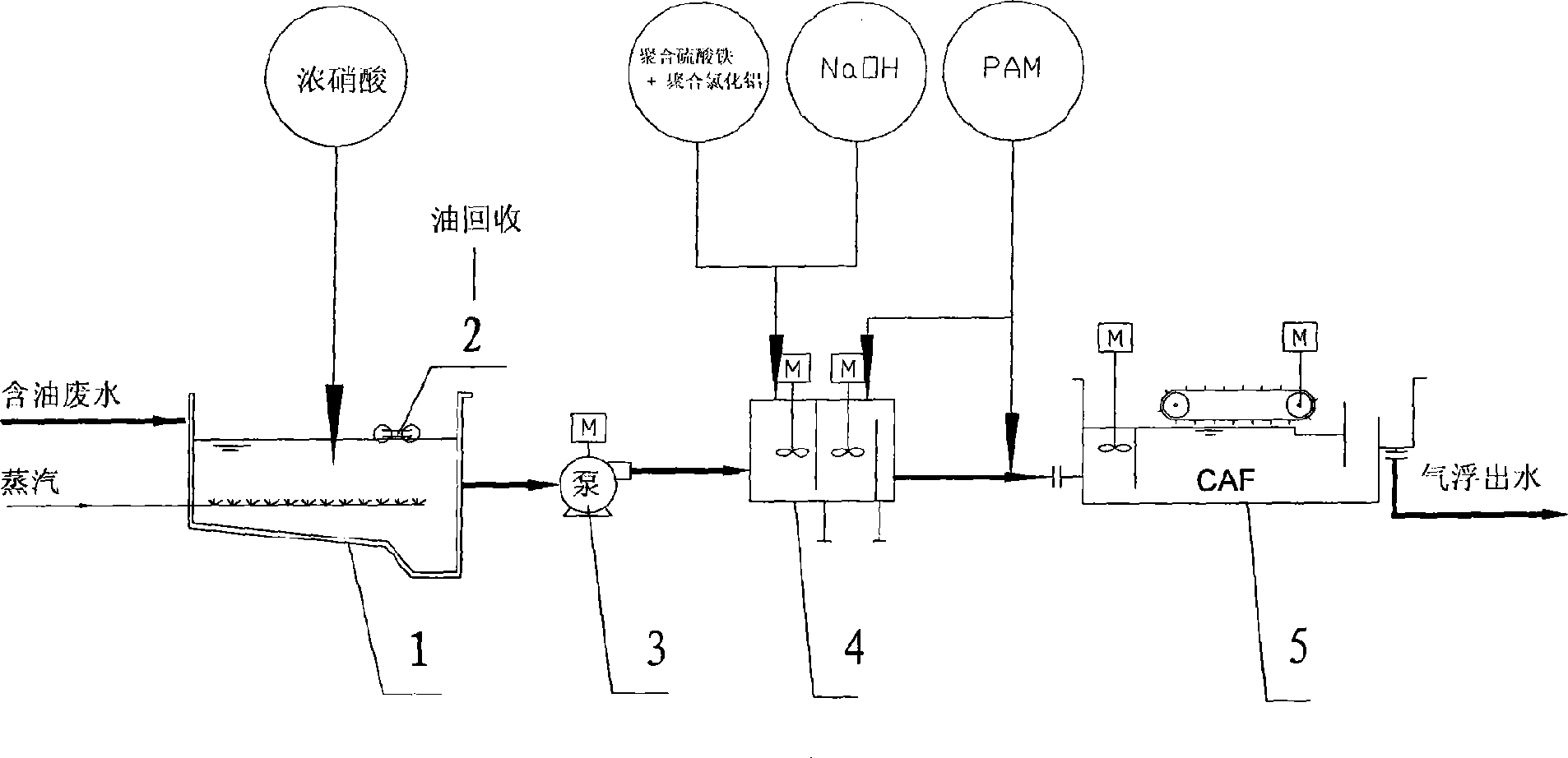Pretreatment process for oily watewater of cold rolling mill
A pretreatment and wastewater technology, applied in flotation water/sewage treatment, water/sewage multi-stage treatment, water/sludge/sewage treatment, etc. Analyzed and other problems to achieve the effect of promoting energy saving, emission reduction and sustainable development, high waste oil recovery rate and low maintenance cost
- Summary
- Abstract
- Description
- Claims
- Application Information
AI Technical Summary
Problems solved by technology
Method used
Image
Examples
Embodiment Construction
[0025] Below in conjunction with accompanying drawing, the present invention will be further explained:
[0026] refer to figure 1 , the pretreatment process of oily wastewater from cold rolling mills is specifically the following steps:
[0027] (1) oil recovery treatment; feed steam into the regulating tank 1, heat the oily waste water temperature to 60°C-70°C, and add concentrated nitric acid (more than 30% by mass) to adjust the pH between 3.0-4.0, and react 3- 5 hours, collect the oil that floats on the surface of the waste water by the floating oil collection device 2 (oil skimmer);
[0028] (2) Demulsification treatment: pump the waste water after oil recovery treatment into the flocculation tank 4, add sodium hydroxide to adjust the pH at 7.0-8.5, add a composite demulsifier of polyferric sulfate and polyaluminum chloride for demulsification treatment , the mass ratio of the two is 8-12:1, the concentration in the wastewater is 400-800mg / L, and the reaction is stirre...
PUM
 Login to View More
Login to View More Abstract
Description
Claims
Application Information
 Login to View More
Login to View More - R&D
- Intellectual Property
- Life Sciences
- Materials
- Tech Scout
- Unparalleled Data Quality
- Higher Quality Content
- 60% Fewer Hallucinations
Browse by: Latest US Patents, China's latest patents, Technical Efficacy Thesaurus, Application Domain, Technology Topic, Popular Technical Reports.
© 2025 PatSnap. All rights reserved.Legal|Privacy policy|Modern Slavery Act Transparency Statement|Sitemap|About US| Contact US: help@patsnap.com

